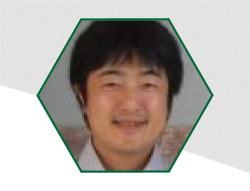Laser-induced forward transfer (LIFT) is a direct-writing technique enabling deposition of a selected area[1]. In addition, a single dot smaller than the laser wavelength at small shot energy can be deposited, and which is called as laser-induced dot transfer (LIDT) technique[2]. In conventional LIDT experiments, multi-shots with step scanning have been used to form array structures. On the other hand, interference laser processing can achieve an arrayed process and generate a periodic structure in a single shot[3,4]. In this presentation, the results of LIDT technique which uses a femtosecond laser interference pattern to LIDT will be presented. As a result, an array of Au nanodots with 3.6 μm period was successfully deposited in a single shot, producing the following unit structures: a single dot, adjoining dots, and stacking dots[5]. The diameter of the smallest nanodot was 355 nm, and the narrowest gap between two adjoining nanodots was 17.2 nm. The results with different fluence, Au film thickness, receiver substrates, atmospheric condition will be reported.
References
1. M. L. Levene, R. D. Scott, and B. W. Siryj, Appl. Opt. 9, 2260 (1970).
2. A. Narazaki, T. Sato, R. Kurosaki, Y. Kawaguchi, and H. Niino, Appl. Surf. Sci. 255, 9703 (2009).
3. Y. Nakata, T. Okada, and M. Maeda, Jpn. J. Appl. Phys. Part 2 Lett 42, L1452 (2003).
4. Y. Nakata, N. Miyanaga, K. Momoo, and T. Hiromoto, Appl. Surf. Sci. 274, 27 (2013).
5. Y. Nakata, E. Hayashi, K. Tsubakimoto, N. Miyanaga, A. Narazaki, T. Shoji, Y. Tsuboi, IJEM, to be published.
Keywords
- Array
- Femotosecond Laser
- Interference Pattern
- Laser-Induced Forward Transfer
- Nanodot

